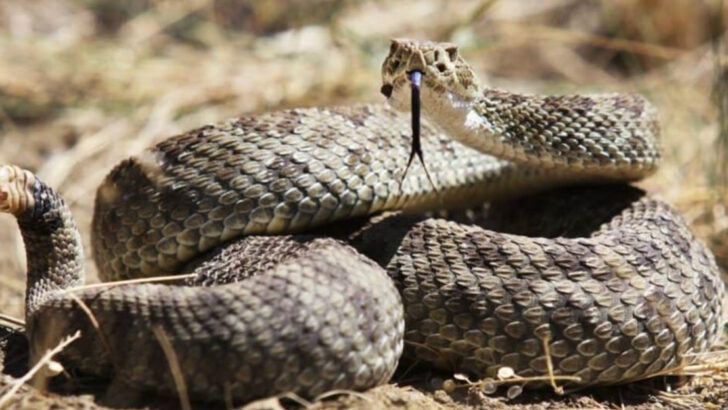Some snakes don’t just defend themselves—they go on the offense. They chase. And yes, they bite. From forests to deserts to your very own backyard, some of the most aggressive snake species in the U.S. are out and about, and they’re not interested in a peaceful encounter. While most snakes avoid confrontation, these are the ones that will stand their ground—or worse, come slithering straight toward you. Want to know which ones to steer clear of—and where they’re hiding right now? You might be surprised how close some of them already are.
Eastern Diamondback Rattlesnake
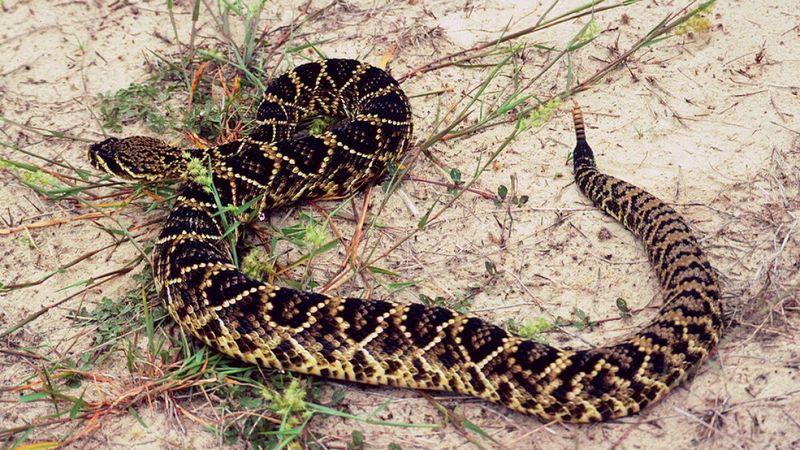
Known for its imposing size, the Eastern Diamondback Rattlesnake can reach lengths of up to eight feet. Its diamond-shaped pattern is both beautiful and intimidating. Preferring the coastal plains of the southeastern United States, this snake is highly territorial.
When threatened, it rattles its tail as a warning sign, a sound that is both chilling and unmistakable. Interestingly, this snake is a master of camouflage, blending seamlessly into its surroundings.
Did you know? The Eastern Diamondback is often considered the heaviest venomous snake in the Americas, and its bite can be fatal without prompt medical attention.
Cottonmouth (Water Moccasin)

The Cottonmouth, or Water Moccasin, is infamous for its assertive nature and venomous bite. Found primarily in the wetlands of the Southern United States, it is often seen basking on logs or swimming with its head held high.
Its name comes from the white interior of its mouth, a stark display when threatened. This snake’s bold personality makes it unafraid to stand its ground.
Curiously, the Cottonmouth is one of few snakes that can swim on the surface, and its presence is often a signal to steer clear.
Western Diamondback Rattlesnake
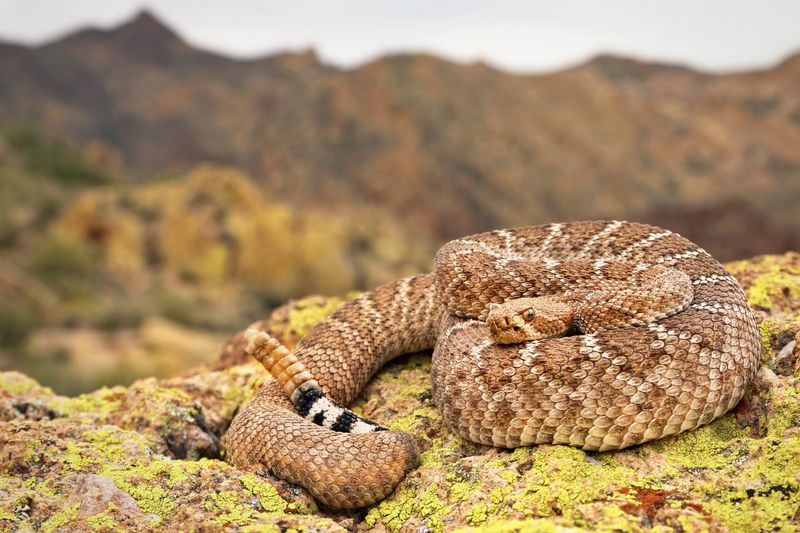
With a reputation as fierce as its cousin in the east, the Western Diamondback Rattlesnake is a symbol of the American Southwest. Its venomous bite is a significant threat, especially given its wide distribution.
This snake is distinguishable by the characteristic diamond patterns along its back and the buzzing rattle that warns intruders. It is commonly found in deserts, grasslands, and rocky areas.
An interesting fact: despite their fearsome reputation, these snakes prefer retreating over confrontation, but will not hesitate to defend themselves if necessary.
Mojave Rattlesnake
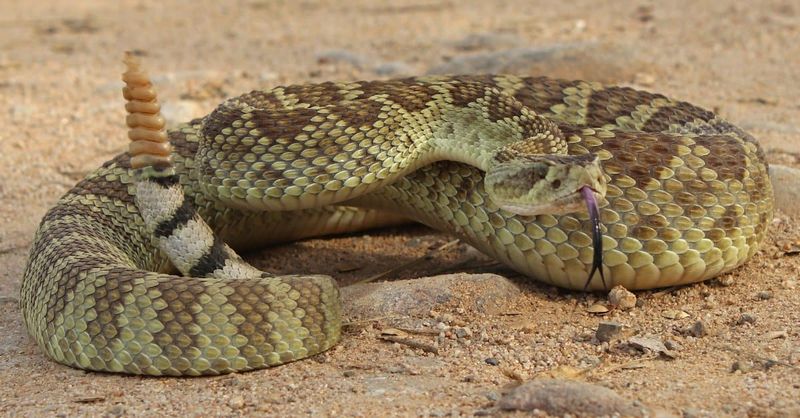
The Mojave Rattlesnake is often regarded as the most venomous snake in North America, packing a potent neurotoxic venom. Its preference for arid, desert environments means it’s right at home in the Southwestern United States.
Cautious by nature, the Mojave Rattlesnake will rattle as a warning before attacking. Its unique greenish coloration helps it blend into its surroundings with ease.
Did you know? The Mojave’s venom can cause both neurological and hemotoxic effects, making it especially dangerous to humans and animals alike.
Copperhead
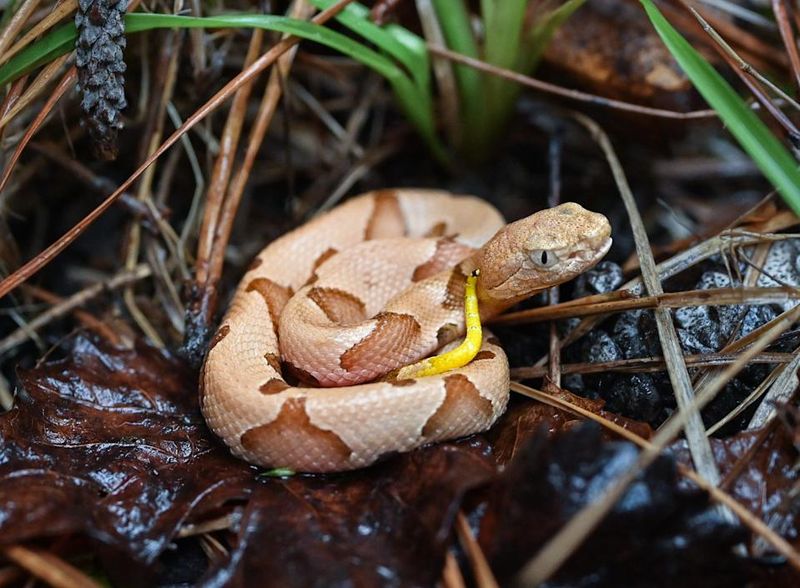
Copperheads are known for their distinctive hourglass-shaped bands and their tolerance for human habitats. Found across the Eastern United States, these snakes are often encountered in wooded areas.
Their venom is less potent than that of other species, but they are quick to bite if provoked. The coppery tone of their skin provides excellent camouflage among fallen leaves.
A quirky fact: Copperheads are known to freeze when threatened, a trait that sometimes leads to accidental encounters with humans.
Timber Rattlesnake
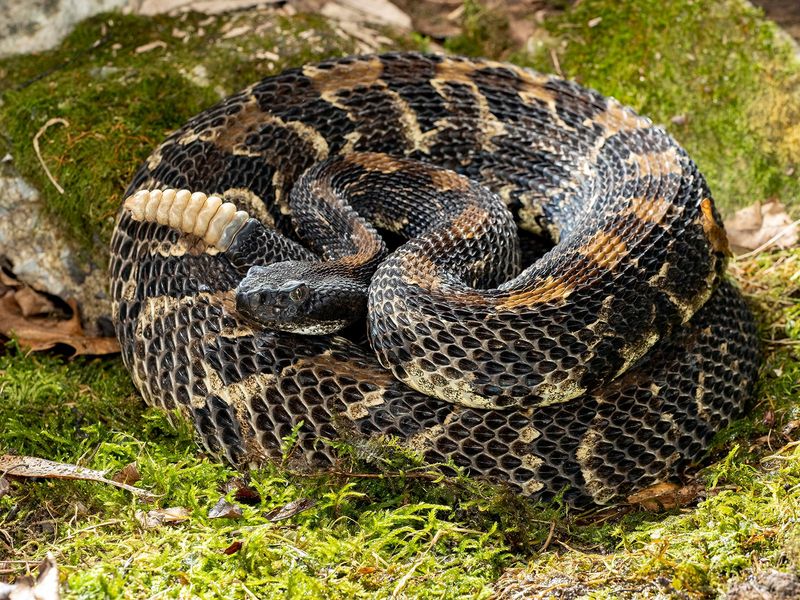
The Timber Rattlesnake, with its rustic and banded appearance, is a dweller of the deciduous forests in the Eastern United States. Known for its patient hunting style, it can remain motionless for hours.
When threatened, it issues a stern warning with its rattle before resorting to aggression. This snake’s natural habitat includes rugged terrains and thick forests.
Fun fact: Despite their intimidating presence, Timber Rattlesnakes play a crucial role in controlling rodent populations in their ecosystems.
Eastern Coral Snake
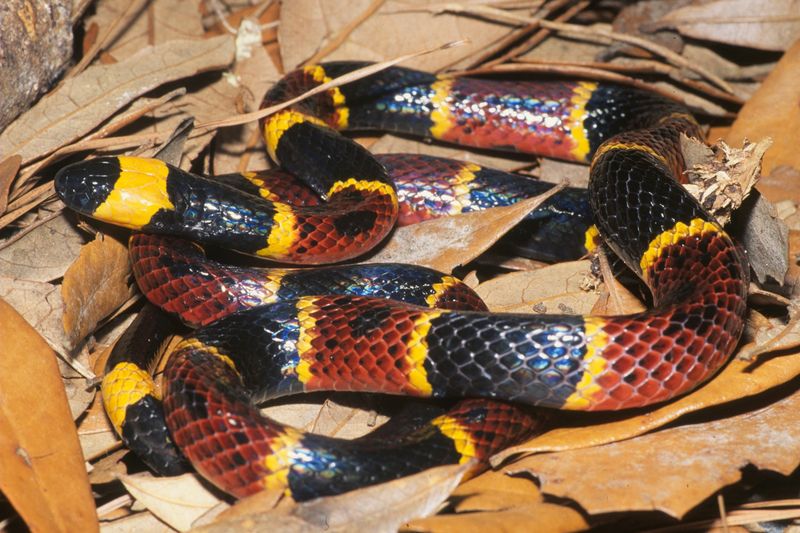
Easily identified by its vivid bands of red, yellow, and black, the Eastern Coral Snake is both beautiful and lethal. Found in the Southeastern United States, its venom is highly toxic.
This snake prefers hiding under debris and within dense underbrush. Although shy, it can deliver a dangerous bite if handled improperly.
Remember: “Red on yellow, kill a fellow; red on black, friend of Jack”—a rhyme many learn to identify this snake safely from its harmless lookalikes.
Prairie Rattlesnake
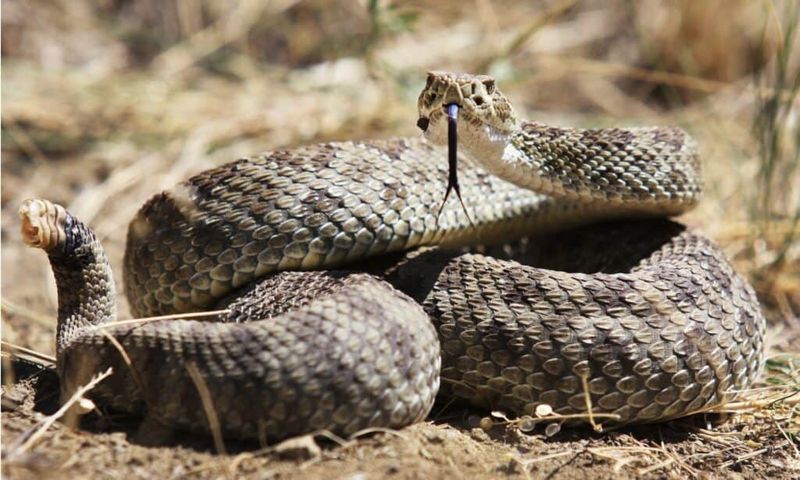
The Prairie Rattlesnake is an inhabitant of the wide, open grasslands across the central United States. Its cryptic coloration allows it to blend effortlessly into its environment.
Known for its highly effective camouflage and ambush strategy, this snake is a formidable predator. It relies on its rattle to warn larger animals of its presence.
Did you know? The Prairie Rattlesnake’s range extends into parts of Canada, making it one of the most widely distributed rattlesnakes in North America.
Sidewinder
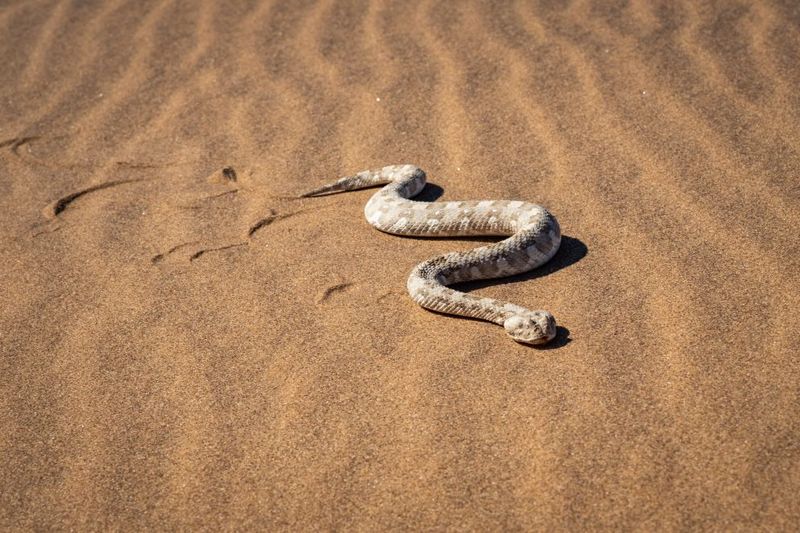
The Sidewinder, with its unique sideways movement, is a master of the desert sands found in the Southwestern United States. Its horn-like scales above the eyes give it a distinct appearance.
This snake’s sideways locomotion minimizes contact with the hot desert surface, a brilliant adaptation to its harsh environment. It relies on surprise to capture prey.
Did you know? Sidewinders are often seen leaving signature S-shaped tracks in the sand, a telltale sign of their presence to those who know where to look.
Pygmy Rattlesnake
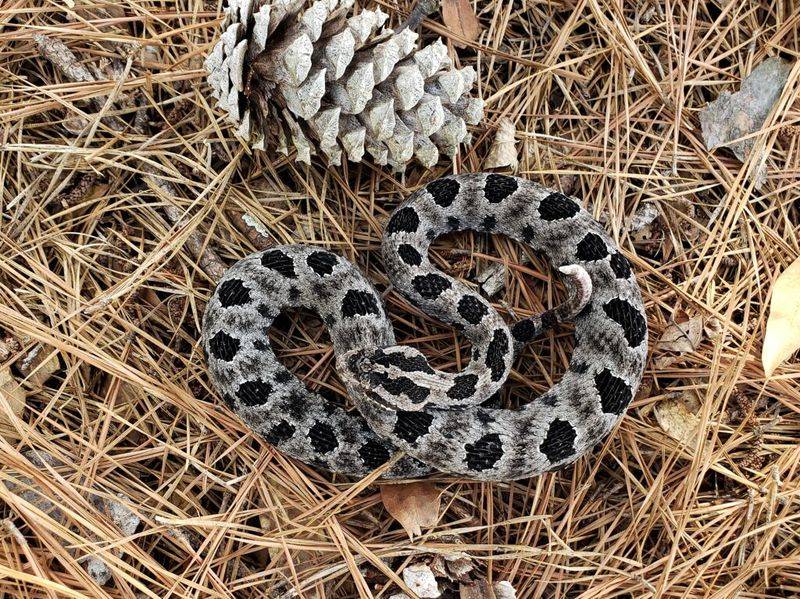
Though diminutive in size, the Pygmy Rattlesnake packs a punch with its venomous bite. Found in the southeastern United States, it favors wooded and marshy areas.
Its small rattle might be less audible, but this snake’s bold patterning makes up for it. It is capable of delivering a painful bite when provoked.
Curiously, the Pygmy Rattlesnake is known for its vibrant coloration, which can vary widely depending on its specific habitat and geographical location.
Texas Coral Snake
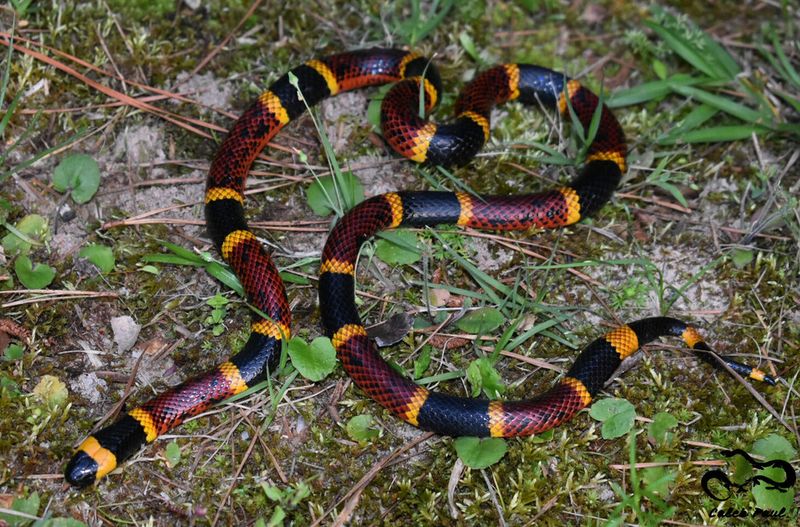
The Texas Coral Snake, similar in appearance to its eastern cousin, is notorious for its potent venom. Its vibrant bands serve as a warning to predators and humans alike.
Found in the brushlands and woodlands of Texas, this elusive snake is rarely seen due to its secretive nature. It’s important to recognize its pattern: “Red on yellow, kill a fellow.”
An interesting tidbit: Coral snakes are responsible for less than 1% of snakebite fatalities annually, thanks to their reclusive behavior and effective antivenom treatments.
Canebrake Rattlesnake
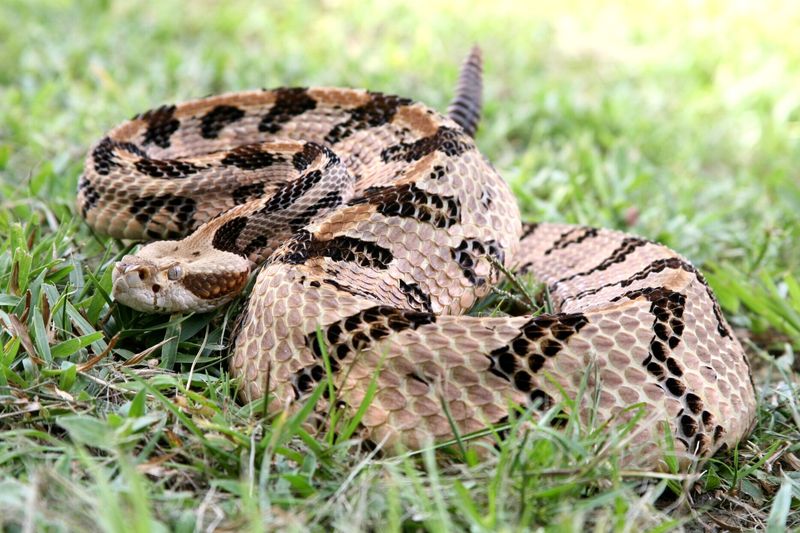
The Canebrake Rattlesnake, a variant of the Timber Rattlesnake, is found primarily in the Southern United States. Its striking color variations make it a marvel to observe from a safe distance.
This snake is known for its powerful venom and defensive nature, often found in swampy or forested regions. It uses its rattle as a first line of defense.
Did you know? The Canebrake is often mistaken for other species due to its diverse coloration, which can range from pinkish hues to gray and brown tones.
Black-tailed Rattlesnake
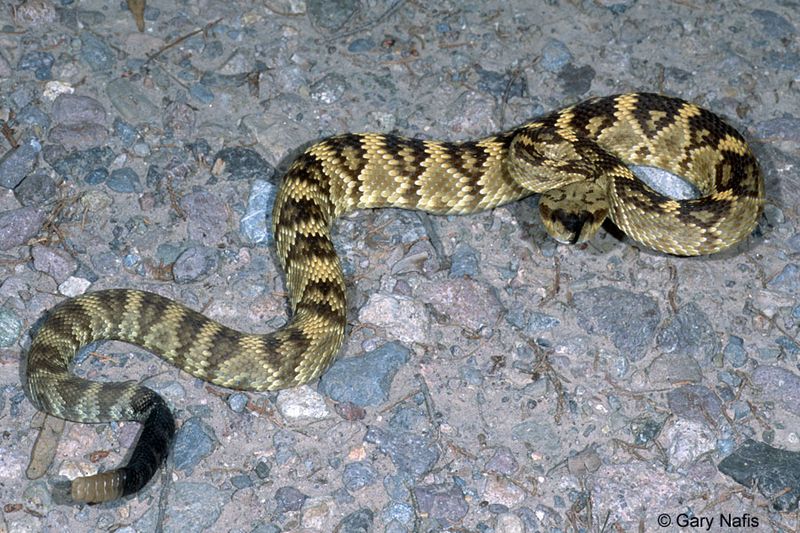
The Black-tailed Rattlesnake is a striking species with a distinctive dark tail, found in the rugged terrains of the Southwest USA. Its habitat includes rocky hillsides and desert canyons.
With a cautious temperament, it relies on its excellent camouflage and rattle to deter threats. Though not as aggressive as others, it is best admired from afar.
Fun fact: This snake’s diet primarily consists of small mammals and birds, making it an essential part of its ecosystem’s balance.

